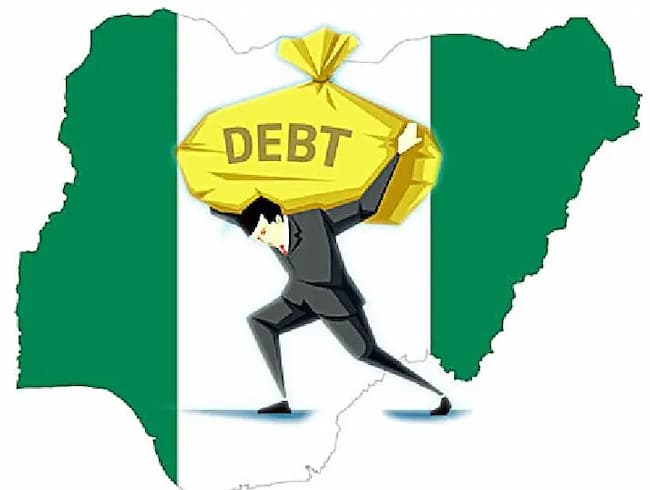Recent data from Nigeria’s Debt Management Office (DMO) shows an increase in external debt for the states and the Federal Capital Territory, rising from $4.61 billion in December 2023 to $4.89 billion by June 2024—an uptick of 6.14%.
When measured in naira, this debt skyrocketed by 73.46%, increasing from N4.15 trillion to N7.2 trillion due to a sharp currency devaluation from N899.39/$1 to N1,470.19/$1 over the same period.
This data underscores a growing dependence on foreign loans among Nigerian states, driven by the need to finance large-scale infrastructure projects and essential services. While these borrowings can support economic development, they also raise concerns about the sustainability of such debt, particularly as Nigeria grapples with broader fiscal challenges.
Here are the top 10 most indebted Nigerian states to foreign creditors as of June 30, 2024:
10. Katsina
Katsina’s foreign debt increased by an impressive 125%, jumping from $50.31 million in December 2023 to $112.98 million by June 2024, an increase of $62.67 million. This substantial growth is likely due to new loans aimed at enhancing agricultural and rural infrastructure, vital to the state’s largely agrarian economy.
9. Kano
Kano, an economic hub in northern Nigeria, experienced a 14% increase in foreign debt, rising from $107.92 million to $123.39 million over six months. The $15.47 million boost may reflect Kano’s initiatives to expand industrial parks and trade infrastructure, aimed at strengthening commercial activities.
8. Ekiti
Ekiti saw a 13% increase in foreign debt, from $121.05 million in December 2023 to $136.64 million in June 2024, representing a $15.59 million rise. This additional debt likely supports ongoing investments in education and healthcare improvements within the state.
7. Ogun
Ogun’s foreign debt decreased slightly, falling by 1% from $168.83 million to $166.64 million, a reduction of $2.20 million. The state’s position as an industrial center may be driving increased internal revenue, allowing it to manage debt more effectively and reduce reliance on external borrowing.
6. Bauchi
Bauchi also recorded a minor 1% drop in its foreign debt, which decreased from $187.63 million to $185.28 million, a reduction of $2.36 million. Known for its agricultural sector, Bauchi seems to be adopting a conservative fiscal approach, aiming to keep its debt levels manageable.
5. Rivers
Rivers State recorded the largest nominal increase in foreign debt, rising by a remarkable 152% from $80.94 million in December 2023 to $203.81 million in June 2024. This $122.86 million surge indicates a high dependency on foreign borrowing.
4. Cross River
Cross River’s foreign debt remained steady at $211 million during this period. The lack of change reflects a cautious approach to borrowing as the state prioritizes fiscal sustainability while funding key tourism and infrastructure projects.
3. Edo
Edo State experienced a significant 21% increase in foreign debt, growing from $314.45 million to $380.97 million—an increase of $66.52 million. This debt rise underscores Edo’s continued reliance on external borrowing to fund infrastructure projects and stimulate economic growth.
2. Kaduna
Kaduna’s foreign debt grew by 9%, increasing from $587.07 million to $640.99 million, a rise of $53.92 million. This increase highlights the state’s ongoing need for external financing.
1. Lagos
As Nigeria’s commercial powerhouse, Lagos State has the highest foreign debt, standing at $1.201 billion as of June 2024. This figure, however, marks a 3% reduction from $1.244 billion in December 2023, a decrease of $42.80 million. Lagos’s substantial debt is driven by extensive infrastructure investments, particularly in road networks and public transport. The slight decrease may reflect strategic repayments aimed at better managing the state’s debt profile.
Overall, the data reveals both a reliance on external borrowing across Nigerian states and some shifts in debt management strategies, as states balance development needs with fiscal prudence.













